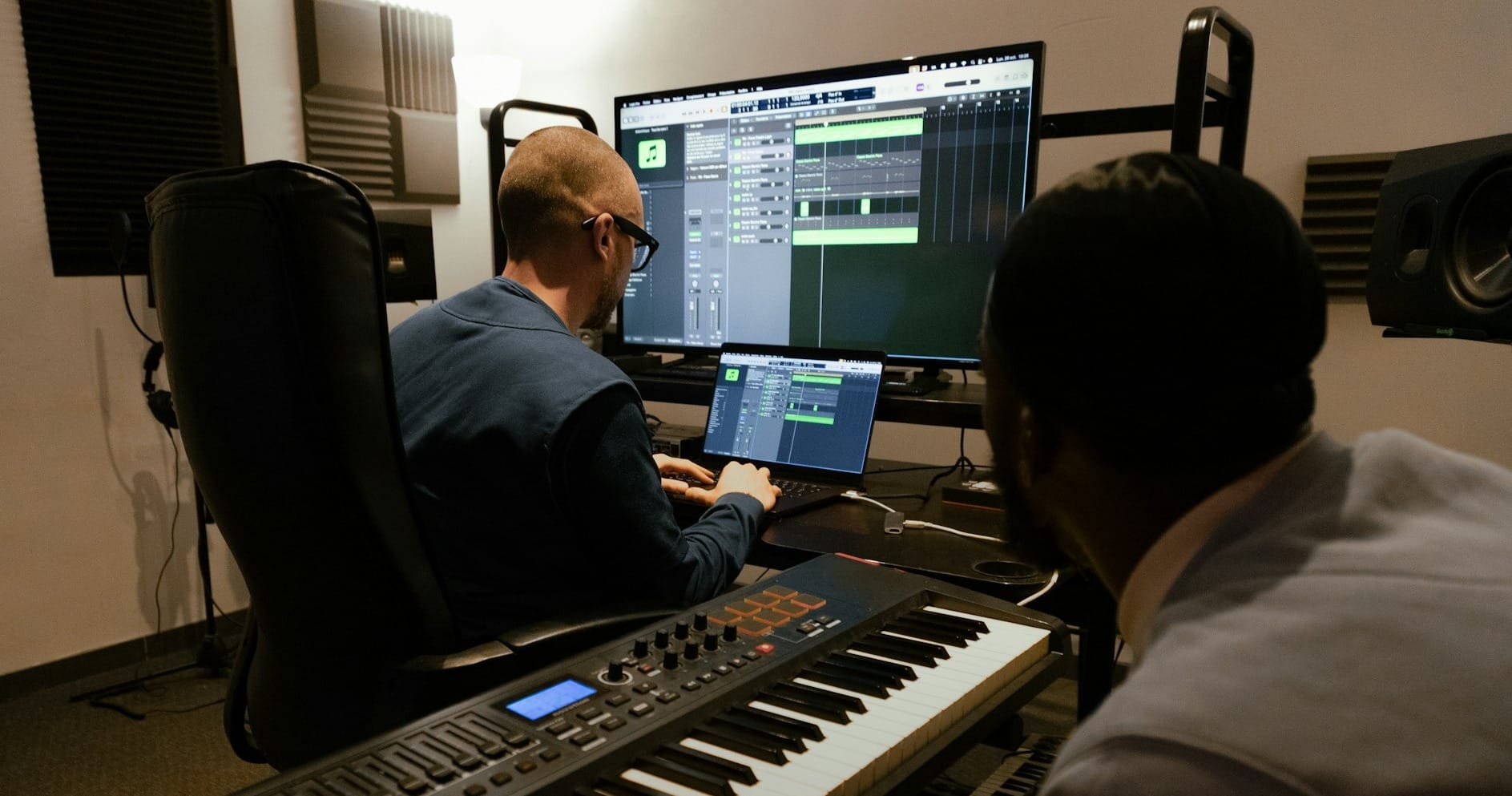What Is Audio Mastering? A Beginner’s Guide to the Basics
A guide to mastering covering essential techniques, tools, and the differences between analog and digital processes for professional-sounding music.

Audio mastering is the final step in producing a piece of music. It involves preparing and refining a finished mix to make sure it sounds balanced, clear, and polished across different playback setups. These include headphones, car audio systems, and larger speaker installations. Mastering is important to keep a song or album consistent in volume and tone to make it ready for distribution via streaming services, CDs, vinyl, or other media.
Basic Principles of Mastering
Mastering takes the mixed audio, which combines all individual instruments and vocals into a stereo track, and makes subtle adjustments to improve the sound quality. This includes using equalizers to boost or cut certain frequencies for tonal balance, compressors and limiters to control loudness and dynamics, and tools to expand the stereo image for more depth and space.
Common Steps in the Mastering Process
Mastering begins with a thorough evaluation of the final mix. The engineer listens carefully to identify any issues, such as unwanted noise, imbalances, or frequency clashes that might detract from the listening experience. If serious problems are detected, the mix might be sent back for revision before continuing.
Once the mix is approved, the mastering engineer imports the audio into a DAW or dedicated mastering software. The first adjustments often involve equalization to correct tonal imbalances, making sure the track sounds natural and consistent across different playback devices.
Next, compression is applied to control the dynamic range, reducing the volume difference between the loudest and softest sounds. This step helps the track maintain a steady loudness while preserving musical expressiveness. Limiters are then used to prevent digital clipping and safely maximize loudness.
After setting the core sonic balance, spatial processing tools like stereo wideners or enhancers may be used to increase the sense of dimension, allowing the mix to feel more open and immersive without losing focus.
For albums or multi-track releases, mastering also involves sequencing songs in the desired order, adjusting fades, and controlling the silence between tracks. These subtle decisions affect the overall flow and listening experience.
Before exporting, metadata such as track titles, ISRC codes, and volume normalization tags are added to the files. The final master is then rendered into formats appropriate for streaming, CD, vinyl, or other distribution channels.
Throughout the process, maintaining a consistent monitoring environment and referencing other tracks ensures the master translates well on various systems. The goal is to enhance without altering the original artistic vision.
Historical Development of Mastering Techniques
The origins of mastering trace back to the vinyl era, when engineers physically cut audio onto records and made manual adjustments for the best playback. With digital technology, mastering became more precise and faster. Over time, tools such as digital equalizers, multiband compressors, and stereo wideners, plus advanced software plugins, became standard in the field.
Although technology has advanced, mastering still seeks to polish the final sound, keep albums consistent, and ensure the music works well on different playback systems. Good mastering often goes unnoticed because it sounds natural and balanced while greatly improving the listening experience.
Mastering for Different Genres and Formats
Mastering practices vary widely depending on the style of music and the intended listening platform. Different genres have distinct sonic characteristics and audience expectations that influence mastering choices.
For instance, pop music often requires a clear, bright sound with pronounced vocals and controlled bass, whereas rock music may demand a more aggressive midrange and punchy drums. Electronic music typically focuses on deep bass and wide dynamic ranges suitable for club sound systems, whereas classical and jazz music prioritize preserving natural acoustic dynamics and instrumental balance.
In addition to stylistic demands, mastering must consider the distribution format. Vinyl records, CDs, and streaming platforms each have specific technical requirements. Vinyl mastering accounts for the physical limitations of the medium, such as minimizing excessive low frequencies and sibilance to avoid skipping.
Masters prepared for streaming often need loudness normalization considerations to ensure consistent volume without clipping across various playback devices. Hence, the mastering engineer adjusts equalization, compression, and limiting accordingly to suit both genre and format.
Considerations for Beginners
Before sending a mix for mastering, it is essential to ensure the mix itself is well-balanced and clean. Avoiding excessive distortion or clipping in the mix saves time and improves mastery results. Accurate monitoring is fundamental throughout the process; working in a controlled listening environment with reliable speakers and headphones helps detect subtle issues requiring attention.
When making adjustments, begin with subtle changes, focusing on preserving the mix’s character while improving clarity, cohesion, and loudness. Reference tracks from similar genres or releases can assist in evaluating the master’s tonal balance and dynamic range. Avoid relying on any single monitoring source by checking the master on multiple systems to ensure it translates well universally.
Frequent Issues and Recommended Solutions
Overcompression is a widespread problem in mastering, leading to loss of dynamic expression and listener fatigue. Use compression carefully, preserving the natural volume variation while maintaining consistency. Distortion caused by exceeding digital limits or improper limiting can degrade sound quality; thus, levels must be managed cautiously to avoid clipping.
Frequency clashes, such as excessive bass or harsh treble, reduce clarity. Employing equalization to address problematic frequency ranges helps maintain a balanced spectrum. Additionally, monitoring phase relationships and stereo image during mastering prevents problems when played in mono or on different systems.
Consistent critical listening, combined with technical measurement tools will help you catching and correcting these common issues, leading to a better final master.
More Advanced Mastering Concepts
Advanced mastering techniques involve precise control and careful manipulation of the audio signal to enhance clarity, balance, and depth while respecting the original mix’s character. One key method is multiband compression, which allows the mastering engineer to apply compression separately to different frequency ranges. It provides a finer level of control, enabling softer treatment of bass frequencies while controlling the midrange or treble more aggressively, preventing the entire mix from being overly compressed.
Another important technique is mid/side processing. It separates the audio into mono (mid) and stereo (side) components, which lets the engineer adjust the center elements, such as vocals or bass, independently from the stereo elements like reverb, pads, or cymbals. By addressing these components separately, it becomes possible to enhance the stereo image and increase spatial depth while keeping a balanced mix.
Dynamic range control is important for preserving musical expression. While compression reduces the difference between loud and soft sounds, mastering engineers carefully choose compression settings to retain enough dynamics so the track remains lively and avoids listener fatigue. Parallel compression is one method used to add punch and sustain without flattening the dynamics. Managing gain staging throughout the mastering chain ensures there is sufficient headroom to prevent distortion and retain clarity in the final output.
Equipment and Software for Mastering
The mastering process depends on a mix of hardware and software tools chosen based on the engineer’s preferences and the studio setup. Analog equipment, for example, includes high-quality equalizers like the Manley Massive Passive, compressors such as the SSL G Series Bus Compressor, and limiters like the Fairchild 670. These devices are prized for their warm, musical tone and hands-on control.
As for digital tools, popular DAWs like Steinberg WaveLab Pro, Magix Sound Forge Pro Suite, and Pyramix offer comprehensive mastering environments. These platforms support advanced functionalities including spectral editing, multitrack processing, and metadata management. Mastering-specific plugins such as FabFilter Pro-Q (equalizer), iZotope Ozone (multiband compression and limiting), and Waves L2 Ultramaximizer (limiter) provide precise control over the sound.
Monitoring plays a critical role in mastering accuracy. Engineers use reference-quality monitors like ATC SCM series or Genelec 8000 series speakers and high-fidelity headphones such as Sennheiser HD 800 or Beyerdynamic DT 1990 Pro. These allow detailed assessment of frequency balance, dynamics, and stereo imaging.
Recent advancements include AI-assisted mastering platforms that analyze tracks and suggest initial settings. But keep in mind that these tools serve mainly as starting points; expert judgment and manual tweaking remain essential for high-quality results.
Metering tools complement the setup by providing objective data on loudness (LUFS), dynamic range, phase correlation, and frequency response. Instruments like the TC Electronic Clarity M Stereo and the iZotope Insight metering suite ensure the master meets technical standards before release.
Follow LALAL.AI on Instagram, Facebook, Twitter, TikTok, Reddit, and YouTube for more information on all things audio, music, and AI.
